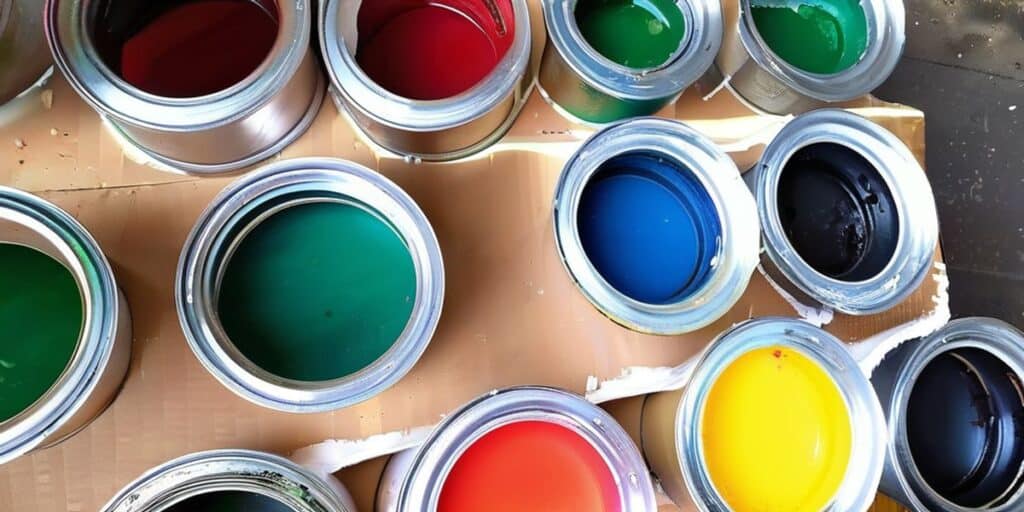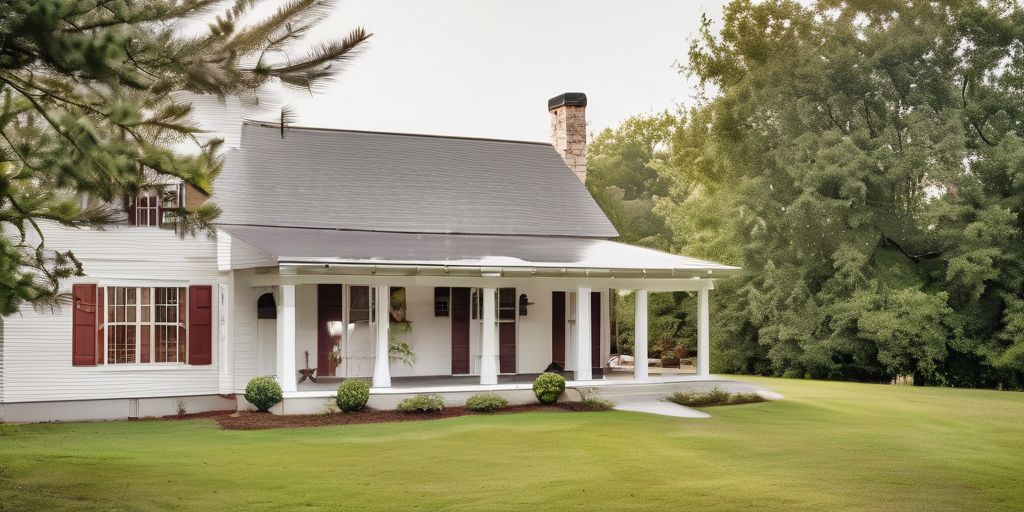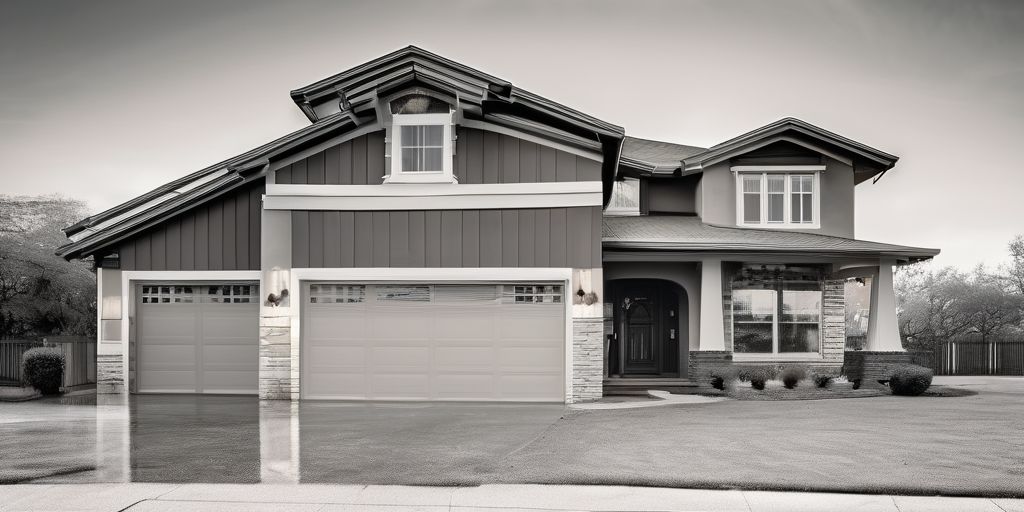Spray painting is a widely used technique in various industries in Mississauga, offering a quick and efficient way to apply paint to surfaces. However, professionals often encounter challenges that can affect the quality of their work. From mastering the spray gun technique to ensuring proper health and safety measures, this article delves into troubleshooting common spray painting challenges in Mississauga projects, providing practical solutions to maintain high standards of quality and safety.
Key Takeaways
- Understanding the differences between airless and HVLP spray systems is crucial for selecting the right equipment for your project.
- Proper surface preparation, including sandblasting and pressure washing, is essential for achieving a durable and high-quality finish.
- Color matching requires a precise mix of paint colors and an understanding of color perception to ensure the final result meets client specifications.
- Quality control in paint finishes involves meticulous inspection strategies and the ability to repair imperfections to maintain a flawless surface.
- Maintaining health and safety standards is vital, with emphasis on using personal protective equipment, ensuring proper ventilation, and handling hazardous materials responsibly.
Mastering Spray Gun Techniques
Understanding Airless vs. HVLP Spray Systems
When embarking on a spray painting project, it’s essential to understand the differences between airless and HVLP (High Volume Low Pressure) spray systems. Choosing the right equipment is pivotal for achieving a high-quality finish.
- Airless spray systems are known for their ability to handle thicker paints and cover large areas quickly. They pump paint at high pressure through a small nozzle, creating a fine mist that evenly coats surfaces.
- HVLP spray systems, on the other hand, use a turbine to generate a high volume of air at low pressure. This method is excellent for detailed work and reduces overspray, making it more suitable for intricate projects or when working in confined spaces.
Maintenance and proper handling are crucial for both types of systems to ensure longevity and consistent performance.
Adjusting the settings on either system allows for control over the paint flow, spray pattern, and thickness, which is essential for a uniform coat. Local options in Mississauga, such as suppliers near the iconic Port Credit Lighthouse, offer a variety of nozzles and maintenance solutions to keep your equipment in top condition.
Adjusting Spray Patterns for Even Coverage
Achieving even coverage when spray painting is crucial for a professional finish. Adjusting the spray pattern is a key step in this process. Here’s how to ensure consistent results:
- Start with the right equipment: Select a spray gun that suits the type of paint and the surface you’re working on.
- Test the pattern: Before starting on your project, test the spray pattern on a piece of cardboard or scrap material.
- Adjust the pressure: If coverage isn’t even, dial back the pressure until you achieve the desired effect.
- Choose the correct nozzle: Different nozzles create different patterns; make sure you have the right one for your task.
Remember, a rounded spray pattern can provide more uniform coverage compared to a narrow one. It’s also important to properly prepare the surface before painting, especially when working on projects like window frames in Mississauga, which require meticulous attention to detail for a lasting finish.
Safety is paramount. Always follow safety guidelines and choose high-quality materials to ensure not only the longevity of your paint job but also your well-being while completing the task.
Tips for Controlling Overspray
Controlling overspray is crucial for achieving a professional finish and maintaining a clean work environment. Here are some tips to help you minimize overspray during your spray painting projects:
- Use a spray booth or sheltered area to contain the paint particles. This is especially important when working on outdoor projects in Mississauga, where wind can carry overspray to unintended surfaces.
- Adjust the spray gun’s pressure settings to match the viscosity of the paint. Lower pressure can reduce the amount of overspray.
- Choose the correct tip size for your spray gun. A smaller tip size can offer more control and less overspray.
- Implement proper spraying technique: hold the gun perpendicular to the surface and maintain a consistent distance.
By mastering these techniques, you can ensure that paint is applied efficiently, reducing waste and the need for cleanup.
Remember, practice and attention to detail are key for achieving a smooth, professional finish. Regularly inspect your equipment to ensure it is in good working condition and clean it thoroughly after each use to prevent clogs that can contribute to overspray.
Surface Preparation Essentials
The Importance of Sandblasting and Pressure Washing
Proper surface preparation is a critical step in ensuring a high-quality finish in any spray painting project. Sandblasting and pressure washing are two methods that effectively clean and prepare surfaces for painting. Here’s why they are essential:
- Sandblasting is a powerful technique that removes old paint, rust, and other surface contaminants. It uses abrasive materials propelled at high speed to clean the surface thoroughly, which is crucial for the paint to adhere properly.
- Pressure washing, on the other hand, uses high-pressure water to remove dirt, mold, and loose paint. It’s a less abrasive method compared to sandblasting and is often used for surfaces that require a gentler approach.
Both methods have their place in surface preparation, and choosing the right one depends on the specific needs of the project. For instance, sandblasting is more suitable for metal surfaces that can withstand the abrasive force, while pressure washing is ideal for cleaning more delicate surfaces like wood or vinyl siding.
It’s important to note that improper surface preparation can lead to paint failure, such as peeling or blistering. Therefore, investing time in these preparatory steps is essential for a long-lasting finish.
When undertaking a spray painting project in Mississauga, it’s beneficial to be aware of the local environment. For example, the proximity to Lake Ontario may influence the type of surface preparation needed due to potential moisture and salt in the air.
Priming Techniques for Durable Finishes
Achieving a durable finish starts with the correct application of primer. Proper priming sets the foundation for a long-lasting paint job, especially in the varying climates of Mississauga, where temperature fluctuations can affect the adhesion and appearance of paint over time. Here are some key steps to ensure effective priming:
- Surface Cleaning: Before priming, ensure the surface is free from dirt, grease, and any loose paint. This may involve pressure washing or sanding, depending on the condition of the surface.
- Primer Selection: Choose a primer that is compatible with the surface material and the type of paint you will be using. For example, metal surfaces often require a rust-inhibiting primer.
- Application Technique: The technique for priming is similar to painting. Keep the spray gun or can a distance of about 12 inches from the surface, and use long, sweeping strokes to apply the primer evenly.
When dealing with materials like T1-11 siding, using an airless sprayer can effectively get the primer into grooves, while a roller can ensure an even coat across larger flat areas.
Remember to spot-prime any repaired areas or spots where imperfections might be visible. This includes nail holes or areas where wood knots may bleed through. Using a 2-inch angled brush can help achieve precision in these areas. The goal is to create a uniform surface that will not only adhere to the paint but also help in maintaining the aesthetic appeal for years to come.
Masking and Protecting Adjacent Areas
When undertaking a spray painting project, it’s crucial to protect the surrounding areas to prevent overspray and unintended paint application. Proper masking is essential to achieving a clean, professional finish. Here are some steps to ensure adjacent areas are well-protected:
- Use high-quality masking materials such as tapes, plastic film, and vinyl sheets.
- Employ canvas drop sheets or covers for larger areas.
- Utilize spray shields to direct paint away from non-target surfaces.
It’s important to select the right type of masking material based on the surface and the project’s specific needs. For example, a delicate surface may require a gentler adhesive to avoid damage upon removal.
Remember, the time invested in thorough preparation pays off in the quality of the final paint job.
In addition to masking, consider the following to enhance protection:
- Ensure equipment is properly calibrated to minimize overspray.
- Select durable paint that withstands the local weather, especially for exterior projects.
- Implement safety measures, including the use of personal protective equipment (PPE).
While these practices are universally applicable, they are particularly relevant for projects in areas like Mississauga, where varying weather conditions can impact the painting process.
Navigating the Color Matching Process
Mixing Paint Colors to Specification
Achieving the precise color for a spray painting project requires meticulous attention to detail and a thorough understanding of color theory. Mixing paint colors to specification is a critical step that can make or break the aesthetic appeal of a project. Here are some key considerations:
- Color Accuracy: Start with a clear understanding of the client’s requirements. Use a color wheel and mixing charts to guide the process.
- Base Paints: Select high-quality base paints that provide a solid foundation for mixing. The choice of base paint can affect the final hue and saturation.
- Pigment Ratios: Carefully measure and mix pigments according to the desired outcome. Even slight deviations can result in noticeable color discrepancies.
Consistency is key in mixing paints. Ensure that the mixture is homogeneous to avoid streaks or variations in the finish. For larger projects, it’s advisable to mix all the paint needed at one time to maintain uniformity.
Remember, lighting conditions can significantly impact how a color is perceived. Always test the mixed color under similar lighting conditions to those where the paint will be applied.
While Mississauga’s vibrant cityscape, with landmarks like the iconic Absolute World towers, offers a plethora of color inspiration, it’s important to focus on the technical aspects of color mixing to meet project specifications.
Dealing with Variations in Color Perception
Color perception can vary dramatically between individuals, influenced by factors such as lighting conditions and the observer’s unique vision. Understanding these variations is crucial when aiming for accurate color matching in spray painting projects.
- Lighting Conditions: The type of light under which a color is viewed can significantly alter its appearance. Natural daylight, fluorescent, and incandescent lighting can each cast different tones on the same color.
- Observer’s Vision: Individual differences in vision, such as color blindness or the sensitivity to certain hues, can affect how a color is perceived.
To mitigate these challenges, consider the following steps:
- Use standardized lighting conditions for color evaluation.
- Provide color samples in the environment where the final product will be placed.
- Employ color correction techniques to adjust for observer variance.
It’s essential to communicate with clients about the subjective nature of color perception to set realistic expectations for the final outcome.
While these strategies can help, it’s also important to remember that some level of variation is inevitable. Embracing this can lead to a more flexible and understanding approach to color matching.
Techniques for Achieving the Perfect Match
Achieving the perfect paint match is crucial for a seamless finish in any spray painting project. Here are some techniques to ensure you get the right hue every time:
- Start by thoroughly cleaning the surface to be painted to remove any contaminants that might affect the color perception.
- Use a color wheel or a fan deck to narrow down your color choices before making a final decision.
- When possible, test your chosen paint on a small, inconspicuous area to see how it dries and reacts to the lighting conditions.
- Remember that the color can appear differently on various surfaces and in different lighting conditions, so always consider the environment where the paint will be applied.
It’s essential to mix paints in a well-ventilated area and to use consistent mixing ratios to achieve uniform color throughout your project.
For those working on projects in Mississauga, the natural light by the Credit River may influence how paint colors are perceived. Adjust your color selection accordingly to ensure the best match in the specific setting.
Ensuring Quality Control in Paint Finishes
Inspection Strategies for Flawless Surfaces
Achieving a flawless finish in spray painting requires meticulous inspection strategies. Here are some key steps to ensure quality control:
- Conduct regular inspections at various stages of the painting process.
- Look for signs of wear such as chipped paint or loose paint, and address them promptly.
- Utilize specialized equipment for detailed inspection, avoiding manual errors.
Attention to detail during the inspection phase is crucial for identifying and rectifying any imperfections before they become more significant issues.
Spray painting can yield superior results for various surfaces, providing an even coating and stronger bond. It’s essential to maintain high standards in finish and texture to ensure long-lasting quality and satisfaction.
Repairing Paint Imperfections
When tackling the task of repairing paint imperfections, it’s crucial to approach the process methodically to ensure a seamless finish. Here are some steps to consider:
- Use a stiff-blade putty knife to scrape off any peeling paint, ensuring the surface is smooth and free from loose material.
- Clean the area thoroughly, removing any residue that could prevent proper adhesion of new paint.
- For minor imperfections, sanding the area lightly can create a smooth base for repainting.
It’s important to apply paint in thin coats to avoid drips and ensure a quicker drying time. This also helps maintain the integrity of the color and finish.
- Once the surface is prepared, exterior painter professionals often use a primer to help the new paint adhere better and to hide any previous imperfections.
- After priming, apply the paint using a spray gun or other equipment, taking care to match the existing color and texture.
Remember, patience and attention to detail are key when repairing paint imperfections to achieve a finish that looks as good as new.
Maintaining High Standards in Finish and Texture
Maintaining high standards in finish and texture is crucial for the longevity and aesthetic appeal of any spray painting project. Proper preparation and application techniques are the foundation of achieving a superior finish. Here are some key considerations:
- Surface Condition: The condition of the surface prior to painting affects the final outcome. Weathering and oxidation may necessitate additional preparation steps.
- Paint and Primer Selection: Using the appropriate paint and primer is essential for durability. The choice should be compatible with the surface’s existing finish.
- Application Consistency: Achieving an even coat requires skillful manipulation of the spray gun and consistent application techniques.
It’s important to remember that the quality of the finish not only protects the substrate but also determines the aesthetic longevity of the project.
In Mississauga, where temperature fluctuations can be extreme, selecting the right coating system that can withstand the local climate is vital. This ensures that the painted surface will maintain its appearance for years to come, much like the enduring beauty of the iconic Mississauga Civic Centre.
Health and Safety in the Painting Industry
Personal Protective Equipment (PPE) for Painters
Ensuring the safety of painters during spray painting projects is paramount. Proper use of Personal Protective Equipment (PPE) is essential to protect against the inhalation of harmful fumes and particles. Here are some key PPE items that should be used:
- Respirators: A respirator is crucial for filtering out airborne particles. N95 masks, for example, offer protection against dust and other particulates.
- Gloves: Durable gloves protect the hands from paint and solvent exposure.
- Eye Protection: Safety goggles or glasses prevent eye irritation from overspray.
- Protective Clothing: Coveralls or aprons guard against paint splashes and spills.
It’s important to select PPE that fits well and is appropriate for the specific painting task at hand.
Remember to regularly inspect and replace PPE to maintain its effectiveness. Training on the correct use and care of PPE is also vital for all painting professionals.
Ventilation and Air Quality Best Practices
Ensuring proper ventilation is crucial for maintaining a safe and healthy work environment during spray painting projects. Good ventilation practices help to disperse harmful fumes and maintain clean air, which is essential for the well-being of painters and the quality of the paint job.
- Use exhaust fans to actively remove fumes from the work area.
- Keep doors and windows open where possible to allow for natural air flow.
- Regularly check and replace air filters to ensure they are functioning effectively.
- Implement a routine for checking ventilation equipment to prevent failures.
It is important to establish a ventilation plan before commencing any painting project to ensure that all safety measures are in place.
By adhering to these practices, painters can minimize health risks and contribute to a safer painting environment. Remember, ventilation is not just about comfort, but also about controlling the quality of the air we breathe while working.
Handling and Disposal of Hazardous Materials
When dealing with the disposal of hazardous materials in spray painting, it’s crucial to follow the correct procedures to ensure environmental safety and compliance with local regulations. Proper disposal is not just a legal requirement but a responsibility to the community.
Hazardous waste, such as oil-based paints, must be handled with care. Here are some steps to consider:
- Identify the type of waste and segregate it from non-hazardous materials.
- Use appropriate containers that are clearly labeled and leak-proof.
- Consult with the local waste management authority for disposal guidelines.
- Never pour paint waste down drains or into the ground.
In Mississauga, you can visit a designated waste disposal facility to ensure that hazardous materials are processed correctly.
Remember, safety protocols are paramount when handling high-pressure spray painting equipment. Regular maintenance and the use of protective gear are essential to minimize risks associated with hazardous materials.
Ensuring the health and safety of workers in the painting industry is paramount. At We Paint Siding, we are committed to providing top-notch painting services while adhering to the strictest safety standards. Our team of professional painters is trained to handle all aspects of exterior painting, from aluminum and vinyl siding to brick and stucco, with precision and care. Don’t compromise on safety or quality; visit our website to learn more about our services and book a free estimate today. Let us help you achieve that curb appeal with confidence and peace of mind.
Conclusion
In conclusion, tackling the common spray painting challenges in Mississauga projects requires a blend of skill, knowledge, and the right equipment. From ensuring proper surface preparation to mastering the techniques of airless, HVLP, and electrostatic spray, each step is crucial for achieving a flawless finish. Whether you’re working on industrial structures, commercial buildings, or automotive bodies, the principles of quality control and attention to detail remain paramount. Remember to keep your workspace organized and adhere to safety standards to ensure not only the beauty of your work but also the satisfaction of your clients. Don’t hesitate to reach out to the experts for guidance or to entrust them with your painting needs.
Frequently Asked Questions
What is the difference between airless and HVLP spray systems?
Airless spray systems use high pressure to atomize paint without air, suitable for large areas and thicker coatings. HVLP (High Volume Low Pressure) systems use a turbine or compressor to supply air, providing a finer finish with less overspray, ideal for detailed or finish work.
How can I adjust my spray pattern for even coverage?
Adjust the nozzle and air pressure according to the manufacturer’s instructions to achieve the desired spray pattern. Test on a piece of cardboard or similar material to ensure even coverage before applying to the main surface.
What are some effective tips for controlling overspray?
To control overspray, use proper ventilation, adjust the spray gun to minimize the amount of paint released, use a spray booth if possible, and cover nearby surfaces with drop cloths or plastic sheeting.
Why is surface preparation like sandblasting and pressure washing important?
Surface preparation is crucial for paint adhesion and longevity. Sandblasting and pressure washing remove dirt, rust, and old paint, providing a clean, roughened surface for the new coating to bond effectively.
How do I ensure accurate color matching in my painting project?
To ensure accurate color matching, use a spectrophotometer or colorimeter for precise measurements, mix paints according to manufacturer specifications, and always test the color on a small area before full application.
What safety measures should I take when spray painting?
Always wear appropriate Personal Protective Equipment (PPE) such as respirators, gloves, and goggles. Ensure good ventilation in the work area, and follow proper handling and disposal procedures for hazardous materials.







